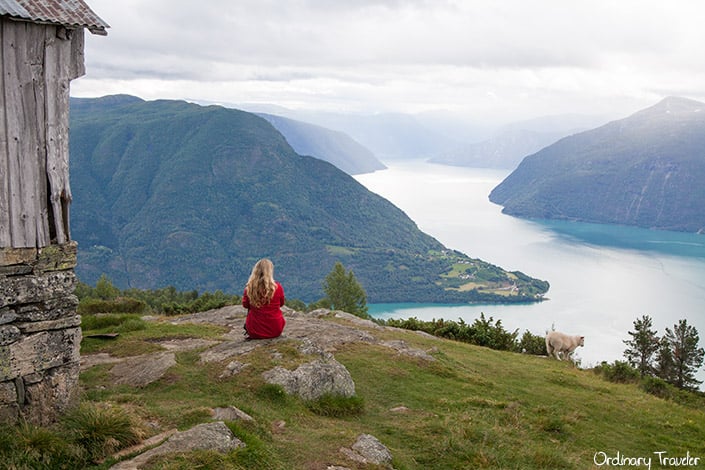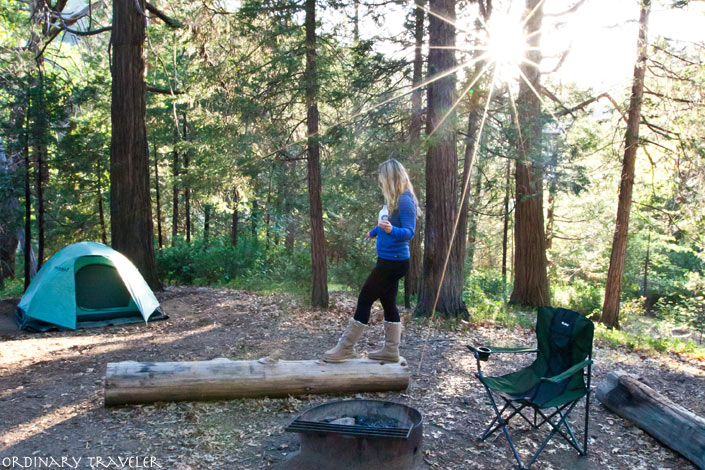The Ultimate Packing List For Campers (Must-Have Essentials!)

Camping Gear
Tent: If you’re packing a car, pack your tent last so it’s the first thing you’re able to set up. Double-check you have all your poles and stakes, a mallet, and your rain-fly (if applicable). We use Coleman tent.
Sleeping Bags: Down or down-substitute sleeping bags are the lightest and easiest to compress.
Sleeping Pads: These Therm-a-Rest compact sleeping pads give you cushion and help radiate heat back to your body.
Tarp: An extra tarp for the tent’s floor will keep you warmer and dryer at night, and if you get one with some extra length, you can use it to wipe shoes off outside.
Clothesline: If there’s a chance you’ll get wet, bring an adjustable bungee clothesline and clothespins for drying.
Hammock: Hammocks are a great addition for relaxing if you have the space. This one is under $20!
Games: Be sure to bring some games like dice or cards.
Firewood: Collecting firewood is not allowed in some areas, so be sure to bring your own. Don’t forget a lighter and kindling!
Headlamp: Bring a headlamp for each person in your group and a few extra batteries.
Read more:
10 Genius Camping Hacks & Tips Every Camper Should Know
Packing List for Overnight Kayaking Trips
Winter Camping Essentials & Cold Weather Camping Tips
8 Best Small Travel Trailers (Under 2,000 Pounds)
Cookware
Storage Bin: Get a clear tote bin to store everything and group items together in large clear bags.
Cooking Utensils: All-purpose knife, spatula, ladle, pot-holders, tongs and tin foil. Skewers are great to bring for s’mores or kabobs.
Pots and Pans: Invest in one really good pot and one pan. We also keep a larger pot handy for camping with big groups. We love this tiny cookware set for backpacking trips because it’s extremely compact.
Camping Stove: These 2-burner stoves are great for car camping and they make cooking in the outdoors simple. For backpacking trips, this backpacking stove is tiny, weighs next to nothing and it heats stuff up fast.
Lighter/Matches: Make sure to pack a few of each! A waterproof case for your matches is also a must.
Dishes: One plate, 1 bowl, 1 mug and one set of utensils for each person. Don’t forget tupperware for leftovers!
Clean up: Microfiber towels that dry quickly, a roll of paper towels, Dr. Bronner’s pure-castile unscented soap, and a folding wash basin.
Clothing & Toiletries
When you’re roughing it, it’s okay to wear the same set of clothes for a few days. Bring as little as you feel comfortable with, but be sure to have the necessary layers and fabric (waterproof, etc.) for the weather. To save space, wear your bulkiest clothing items on travel days.
Layered Clothing: Base layers are always a good idea when camping; they keep you warm at night by wicking away sweat and holding in your body heat. This packable jacket is another handy item to pack because it doesn’t take up much room and keeps you super warm on those cold nights by the campfire. And don’t forget a beanie to keep your head and ears warm!
Insect Repellent: We always keep a pen size spray pump of insect repellent in our camping gear, so we never have to worry about forgetting this very important item.
Sunscreen: Another VERY important item to add to your list!
Toiletries: Depending on the length of your trip, you’ll want to bring the usual shampoo, conditioner, soap, toothpaste and face wash. (TIP: Dr. Bronner’s All Natural Liquid Soap can be used as shampoo, body wash, mouthwash, shaving cream, or even dish soap or laundry detergent AND it’s free of chemicals, so it won’t harm the environment.) Take a toothbrush and some floss, too—those are one of the most frequently forgotten items.

Read more:
What to Pack for a Trip to Norway
The Ultimate Guide to Camping in California’s Channel Islands
Alaska Packing Guide
Hiking
If you’re only going day-hiking, a standard frameless backpack is fine. Fruit, nuts, and jerky will keep you sated and energized. For multi-day hikes, get a framed backpack, and make sure you pack no more than 20-30% of your body weight. Soft items like clothing should be directly against your back, while heavy items like cooking gear should be in the center of your pack for balance.
Water: We always carry at least one water bottle and, for longer hikes, we bring a 3L bladder.
Water Filtration System: If you’ll be hiking or camping near a water source, we found this amazing water filtration system. It’s compact and it eliminates 99.9% of bacteria.
Shoes: It’s a no-brainer that shoes (and socks!) can make or break your hiking trip. I wear these women’s hiking shoes and I cannot live without these smartwool hiking socks — which provide cushion and keep my feet dry.
Daypack: I use this backpack for hiking. It has everything I need — including two large side pockets for water, an internal padded sleeve for a 3L hydration bladder, plenty of internal and external compartments, and an attached rainfly.
Read more:
Hiking & Road Trip Tips for Utah’s National Parks
Zion National Park Travel & Hiking Guide
Havasu Falls Travel Tips
Electronics
Bring as few as possible! But if you have a GPS device (including your phone), you can keep it charged with a rechargeable device.
Charger: This mini lantern doubles as a light source and an external battery charger. It provides up to 52 hours of light or back up boost to your phone.
Portable Camping Lantern: This small portable lantern is unlike any other lantern we’ve ever owned — it’s rechargeable, it can be used as an external battery to charge your electronic devices, it’s lightweight, and it’s 100% waterproof! Plus, it’s only $37!
Rechargeable Phone Case: While I love the above external battery chargers and always bring them on our camping trips, having a phone case with a built-in external battery means I’ll never be caught with a dead phone battery. This case has changed my life — not just for camping, but for long travel days.
Read more:
Carry-on Packing Guide for Airplane Travel
Road Trip Essentials: What to Pack on a Road Trip
Photography
Again, a lighter load is better. Limit yourself to two lenses and your lightest tripod (or a monopod that you can lean against something). A special camera backpack can keep your gear safe and dust-free, and you’ll want to keep your gear in the shade if you’re camping in hot weather.

